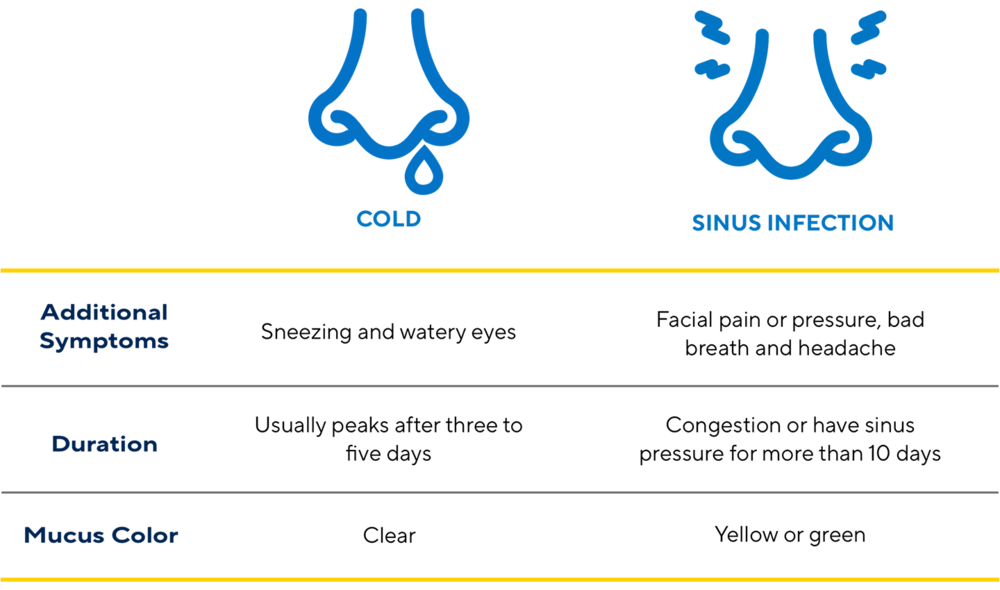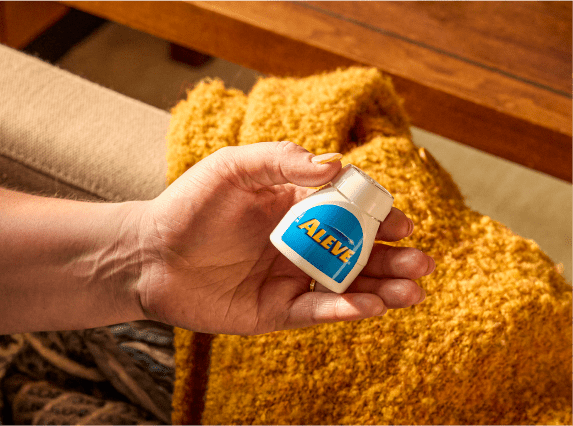The information provided on this site is for educational purposes only and is not a substitute for professional medical advice. Please consult a healthcare professional for medical advice, diagnosis and treatment.
Cold and sinus pain is an unfortunate fact of life for many people. On average, adults catch about two to three colds per year, and they’re one of the most frequent reasons for missing work. Even when symptoms aren’t severe enough to stay home, they can make going about your daily activities a bit miserable. Understanding the causes, symptoms and treatment options of both colds and sinus infections can help you find relief and get back to doing the things that matter most.
WHAT CAUSES A SINUS INFECTION VS. A COMMON COLD?
COMMON COLD CAUSES
The sinuses are air-filled spaces in the skull behind the forehead, nasal bones, cheeks and eyes. These spaces are lined with mucous membranes. Colds, caused by more than 200 kinds of viruses, can lead to inflammation in the membranes lining the nose and throat, and can sometimes block normal circulation through the sinuses.
The common cold is named because viruses that cause it spread so easily, passing from person to person in airborne droplets from coughing and sneezing, and even from droplets on shared surfaces like countertops and doorknobs. Colds can happen year-round, though they’re more common during the fall and winter, when people spend more time indoors and the nasal passages are drier and more vulnerable to infection.
SINUS INFECTION CAUSES
Sinus infections, on the other hand, happen when fluid builds up in the sinuses, allowing germs to thrive. Sinus infections are usually caused by viruses, but bacteria can also cause a sinus infection.
Interestingly, a cold can turn into a sinus infection when inflammation prevents the sinuses from draining and bacteria develops. Other sinus infection risk factors include seasonal allergies, smoking or secondhand smoke, and a weakened immune system.
SINUS INFECTION VS. COLD: HOW TO TELL THE DIFFERENCE

HOW TO MANAGE COLD AND SINUS SYMPTOMS
Though viruses can’t be cured and have to run their course, the good news is that both cold and sinus symptoms can usually be managed with a combination of cold and sinus medicine and home remedies.
If you have nasal congestion and sinus pressure for more than seven days, or your symptoms are severe and get worse, see your doctor immediately. Sinus infections can sometimes require antibiotic treatment.
References
Centers for Disease Control and Prevention. Manage common cold.
Centers for Disease Control and Prevention. Sinus infection basics.
Cleveland Clinic. How to tell if your cold is actually a sinus infection.
Johns Hopkins Medicine. Common cold.
Johns Hopkins Medicine. The do’s and don’ts of easing cold symptoms.
New York Sinus Center. Help fight sinus congestion with these 7 spicy foods.






